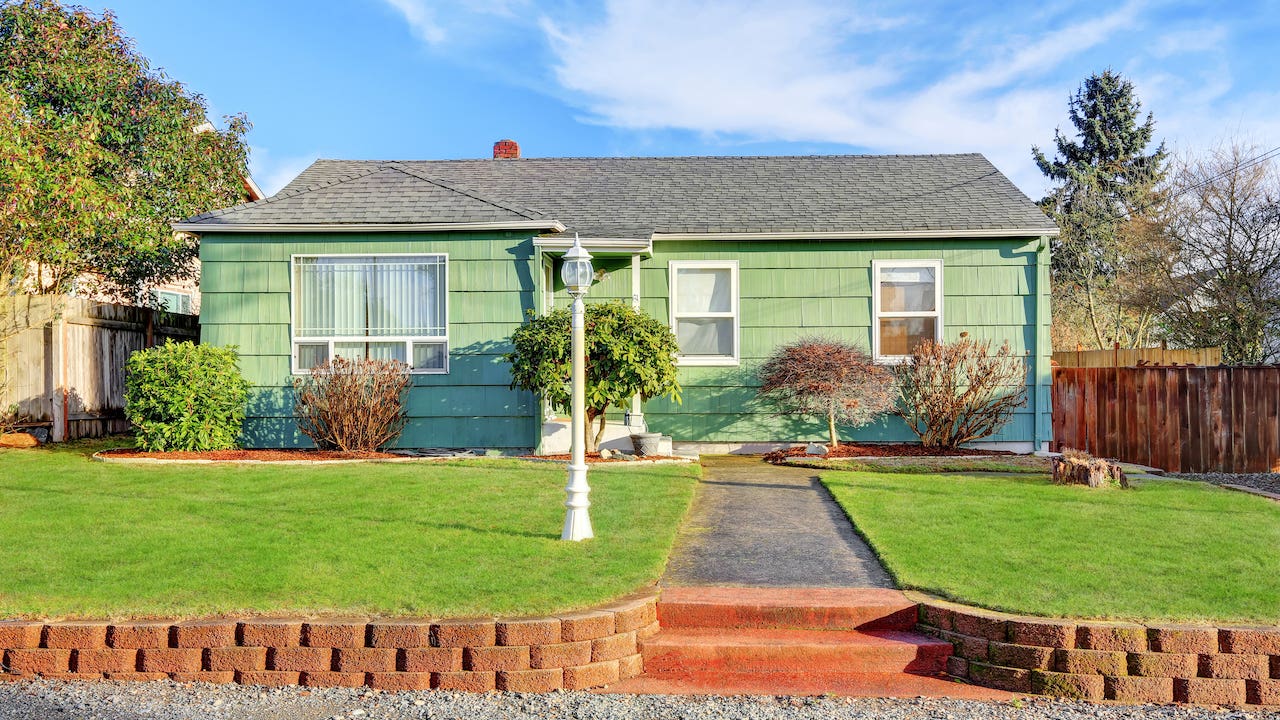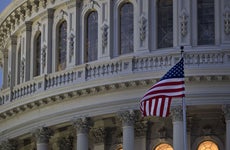What is a government-sponsored enterprise (GSE)?

The Bankrate promise
At Bankrate we strive to help you make smarter financial decisions. While we adhere to strict , this post may contain references to products from our partners. Here's an explanation for .
The U.S. economy is a complex system of interconnected components. To keep money flowing efficiently throughout these components, the federal government lends a helping hand in the form of government-sponsored enterprises, or GSEs. Over the years, Congress has created GSEs that improve the flow of credit and add stability, affordability and liquidity to different areas of the economy, including housing.
Fannie Mae, Freddie Mac and the Federal Home Loan Banks are three GSEs that help bring and distribute cash to the real estate market. Here’s what to know about them.
How do government-sponsored enterprises work?
A government-sponsored enterprise is a kind of financial services entity created by Congress to help increase the flow of credit and cash to different sectors of the economy, including the housing sector.
“GSEs operate in a manner similar to private corporations, but with a public purpose,” says Andrew Lokenauth, founder of the digital community Fluent in Finance. “They help expand credit and reduce borrowing costs, offering benefits to consumers and borrowers.”
Being regulated by the government helps keep affordability in check for GSE products, like Fannie Mae or Freddie Mac mortgages. “GSEs can, for example, offer security and guarantee for loans by purchasing loans from the primary market and reselling these loans to investors on the secondary market,” says Kevin Garcia, a real estate broker with WLM Financial in Inglewood, California.
And while GSEs do not lend money directly, the fact that they guarantee third-party loans provides a valuable safety net for lenders. “In the event of an economic catastrophe, everyone who does business with these companies will still have their money,” says Martin Orefice, founder of Rent To Own Labs.
Housing sector GSEs
Two well-known and important GSEs serve the housing market: Fannie Mae and Freddie Mac. Neither one is a direct lender — they do not originate loans, but rather purchase them from lenders to be packaged as mortgage-backed securities in the secondary mortgage market. This provides the lenders more capital to continue offering loans and keeps a steady flow of capital through the housing market. A third GSE, Federal Home Loan Banks, also serves an important function in real estate financing. Here’s more about each:
Fannie Mae
The federal government first chartered Fannie Mae (a nickname for the Federal National Mortgage Association, or FNMA) in 1938. After many American homes were lost to foreclosure during the Great Depression, its mission was to shore up the mortgage market for both lenders and buyers. To that end it introduced the 30-year fixed-rate mortgage, which made homeownership more accessible through stable, predictable monthly payments over a long period of time.
One of today’s popular Fannie Mae offerings is the HomeReady Mortgage, which is designed to help lower-income buyers achieve homeownership.
Note that Fannie Mae is not to be confused with Sallie Mae, which is also a GSE but does not have anything to do with housing. The Student Loan Marketing Association (SLMA) was created by the government in 1972 and offers student loans and other financial products to consumers.
Freddie Mac
Congress established the Federal Home Loan Mortgage Corporation (FHLMC), better known as Freddie Mac, in 1970. Like Fannie Mae, Freddie Mac helps ease access to more affordable financing and purchases loans from lenders, helping maintain the flow of capital.
One thing that differentiates Freddie Mac from Fannie Mae is that they typically buy loans from different types of lenders. Freddie Mac tends to prefer smaller banks, while Fannie Mae usually partners with bigger commercial banks. Furthermore, each GSE has different rules and requirements for the loans they acquire.
Popular loan options available via Freddie Mac include the Home Possible mortgage, for low-income buyers, and the HomeOne mortgage, which is designed for first-time homebuyers.
Federal Home Loan Banks
Congress formed the system of Federal Home Loan Banks (FHLBs) in 1932. Its Great Depression-era mission was to aid mortgage lending and related community investment activity. Today, 11 FHLBs around the country help provide reliable liquidity to participating banks, lenders, credit unions, insurance companies and savings associations to boost real estate financing and community investment.
“FHLBs support the housing finance system and stabilize the local financial sector by providing advances — meaning loans — to member institutions,” says Lokenauth.
The Federal Housing Finance Agency (FHFA)
The FHFA, created by the Housing and Economic Recovery Act of 2008, is the federal agency that oversees Fannie Mae, Freddie Mac and the 11 banks that comprise the FHLB system. The FHFA is responsible for ensuring that these GSEs “fulfill their mission by operating in a safe and sound manner to serve as a reliable source of liquidity and funding for housing finance and community investment.” According to its website, the three GSEs together provide more than $8 trillion in funding for the U.S. mortgage market.
Bottom line
Government-sponsored enterprises, commonly known as GSEs, are Congressionally chartered agencies that help ensure the health and credit flow of several facets of the economy, including housing. Fannie Mae and Freddie Mac, both of which are big players in the mortgage market, are the best-known GSAs that service the housing sector. Both were created to make homeownership more accessible to consumers, and both help keep a healthy credit flow for lenders.
Related Articles



